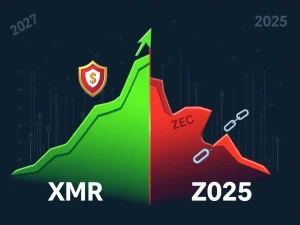Tether U.S. Unleashes Bold Re-Entry: A New Era for Stablecoins and Institutional Crypto

Imagine a world where cross-border transactions are instant and nearly free, and interbank settlements are seamless. This vision is drawing closer as Tether, the world’s largest stablecoin issuer, makes a monumental move to re-enter the Tether U.S. market. This isn’t just a corporate expansion; it’s a strategic pivot poised to reshape the landscape of digital finance and potentially accelerate the mainstream adoption of stablecoins. Get ready to dive into the details of this groundbreaking development!
Tether U.S. Re-Entry: A Strategic Masterstroke?
Tether, the issuer behind the widely used USDT stablecoin, is making its highly anticipated return to the U.S. market. This isn’t a cautious step, but a strategic re-entry aimed at significantly expanding its footprint in critical financial sectors. Paolo Ardoino, Tether’s CEO, has clearly articulated the company’s vision: to become a pivotal tool for payments, interbank settlements, and crypto trading within the United States. This bold move aligns perfectly with the recent passage of the GENIUS Act, a landmark piece of legislation that effectively opens the door for foreign stablecoin issuers like Tether to legally mint their tokens on U.S. soil. For U.S. institutions, this could mean access to faster and more cost-effective transaction methods, leveraging the power of USDT.
What Does the GENIUS Act Mean for Stablecoins?
The passage of the GENIUS Act, signed into law by President Donald Trump, marks a pivotal shift in the U.S.’s regulatory stance on stablecoins. Historically, the U.S. market has been a complex environment for foreign stablecoin issuers due to regulatory ambiguities. The GENIUS Act changes this by providing a clear framework, allowing these entities to operate and issue tokens domestically under specific guidelines. Here’s what it means for Tether:
- Legal Framework: Tether can now legally issue USDT within the U.S., adhering to defined regulatory standards.
- Hybrid Operations: The act permits Tether to maintain its primary global operations abroad while establishing a domestic issuance presence.
- Regulatory Compliance: Paolo Ardoino has confirmed Tether’s commitment to meeting all new requirements, including enhanced transparency measures, a crucial step for gaining trust in the U.S. financial ecosystem.
This legislative clarity is a game-changer, providing the necessary foundation for Tether’s ambitious plans.
Introducing the New Tether Stablecoin for Institutions
Beyond its existing USDT offering, Tether is actively developing a brand-new Tether stablecoin specifically tailored for the U.S. market. This new stablecoin is designed from the ground up to meet stringent U.S. regulatory standards, aiming to foster greater trust and adoption among American banks and trading firms. The strategic intent behind this new offering is clear: to position Tether as a preferred partner for financial institutions seeking modern, efficient settlement solutions. This specialized stablecoin could become a key component in bridging traditional finance with the burgeoning digital asset space, offering a regulated and reliable alternative for large-scale transactions.
Addressing USDT Transparency: A Path to Rebuilding Trust?
Tether’s journey hasn’t been without its hurdles. The company has faced significant criticism regarding the public disclosure of its reserve assets, an issue that even led to the temporary suspension of USDT listings on some European exchanges due to new crypto regulations there. Paolo Ardoino openly acknowledged these past shortcomings, emphasizing a renewed commitment to transparency and accountability. To rebuild credibility with U.S. financial institutions, Tether has pledged to implement:
- Strict Audits: Regular and rigorous third-party audits of its reserve assets.
- Enhanced Oversight: Robust internal and external oversight mechanisms to ensure compliance and reliability.
Ardoino views the U.S. market as a “critical opportunity” for Tether to demonstrate its unwavering reliability in a rapidly evolving regulatory landscape. Analysts agree that frequent, independent audits will be essential for Tether to maintain its competitive edge and prevent further erosion of trust, particularly as it seeks to expand its institutional partnerships.
How Will Tether Impact U.S. Crypto Payments?
The U.S. market presents a significant demand for faster, cheaper, and more efficient cross-border and domestic crypto payments. Traditional financial systems often involve delays and higher costs, creating a clear void that stablecoins like USDT can fill. Tether’s value proposition—speed, low cost, and stability—aligns perfectly with this market need. Financial institutions are increasingly exploring digital tools to streamline settlements and reduce reliance on legacy infrastructure, making stablecoins an attractive alternative.
However, Tether’s re-entry is not without challenges:
- Competition: The stablecoin market is growing, with other issuers also vying for institutional adoption.
- Regulatory Scrutiny: While the GENIUS Act provides clarity, ongoing regulatory oversight will remain a wildcard in Tether’s expansion plans.
Tether’s ability to navigate these competitive and regulatory pressures while maintaining its dominant market share will be crucial to the success of its U.S. strategy. Its return reflects a broader trend in the crypto industry, where regulatory clarity is becoming a primary driver of mainstream adoption.
By aligning with the GENIUS Act and prioritizing institutional partnerships, Tether aims to solidify its role in a market increasingly embracing digital assets. The outcome of this ambitious initiative will undoubtedly influence the trajectory of stablecoin innovation and the future of cross-border financial services in the years to come.
Summary: A New Dawn for Tether in the U.S.?
Tether’s strategic re-entry into the U.S. market, bolstered by the progressive GENIUS Act, marks a significant turning point for the stablecoin giant. With a renewed focus on institutional adoption, the development of a new U.S.-specific stablecoin, and a strong commitment to enhanced transparency, Tether is poised to redefine its role in global finance. While challenges remain, particularly around maintaining trust and navigating competition, this bold move underscores the growing convergence of traditional financial systems with the innovative world of digital assets. The coming years will reveal just how impactful Tether’s U.S. expansion will be, potentially setting a new standard for stablecoin integration into the mainstream economy.
Frequently Asked Questions (FAQs)
1. What is the GENIUS Act?
The GENIUS Act is a newly passed U.S. law that provides a legal framework for foreign stablecoin issuers, like Tether, to legally mint and operate their tokens within the United States under specific regulatory guidelines. It aims to provide clarity and facilitate the adoption of stablecoins in the U.S. financial system.
2. Why is Tether re-entering the U.S. market now?
Tether is re-entering the U.S. market now primarily due to the passage of the GENIUS Act, which offers the necessary regulatory clarity. This move is strategic, aiming to expand Tether’s role in payments, interbank settlements, and crypto trading, particularly for U.S. institutions seeking faster and more cost-effective transactions.
3. What is the new stablecoin Tether is developing for institutions?
Tether is developing a new stablecoin specifically tailored for the U.S. market. This new stablecoin is designed to meet stringent U.S. regulatory standards and aims to foster greater trust among American banks and trading firms, positioning Tether as a preferred partner for institutional settlement solutions.
4. How is Tether addressing past transparency concerns regarding USDT?
Tether is addressing past criticisms regarding its reserve transparency by pledging to implement strict, frequent third-party audits and enhanced oversight measures. CEO Paolo Ardoino views this as a critical opportunity to rebuild credibility with U.S. financial institutions and demonstrate the company’s reliability.
5. What impact will Tether’s re-entry have on U.S. crypto payments?
Tether’s re-entry is expected to significantly impact U.S. crypto payments by offering faster, cheaper, and more efficient cross-border and domestic transaction solutions. It could accelerate the adoption of stablecoins by financial institutions seeking to streamline settlements, though it will also face competition and ongoing regulatory scrutiny.
6. Who is Paolo Ardoino?
Paolo Ardoino is the Chief Executive Officer (CEO) of Tether. He has been a prominent figure in the company’s strategic decisions and public communications, including outlining Tether’s plans for re-entry into the U.S. market and its commitment to transparency and institutional partnerships.










